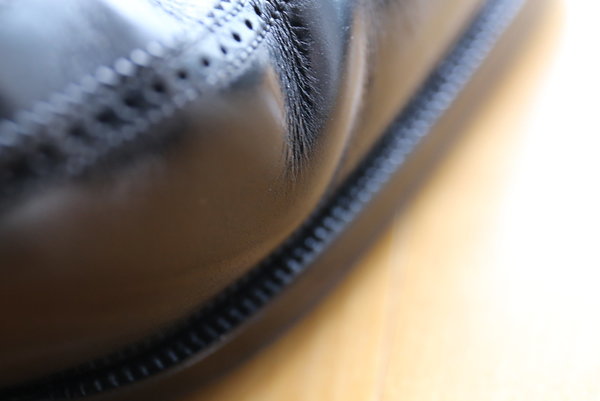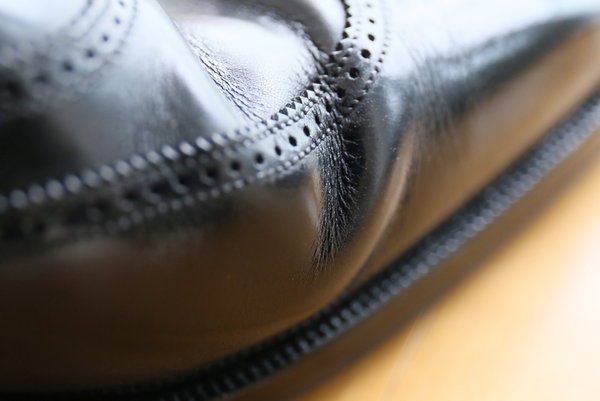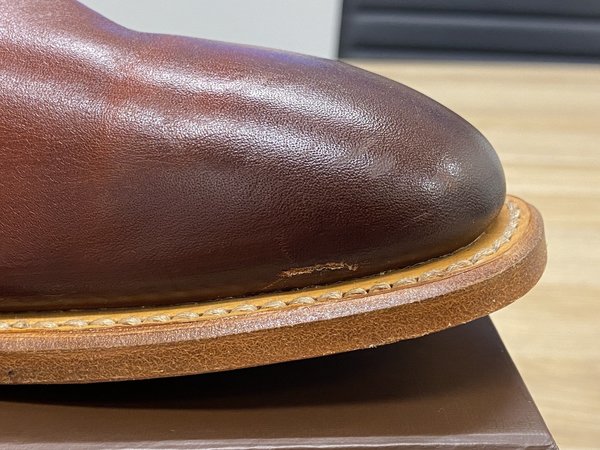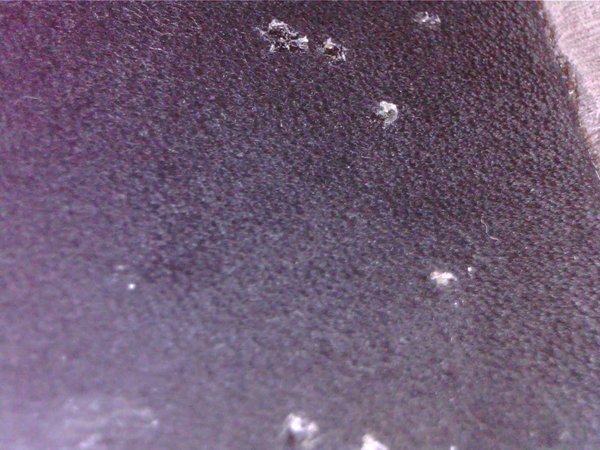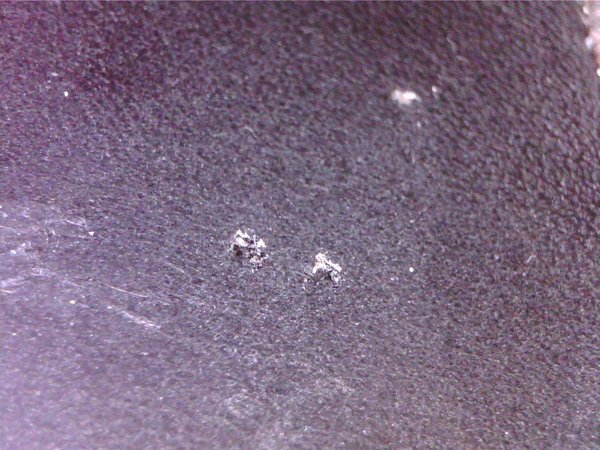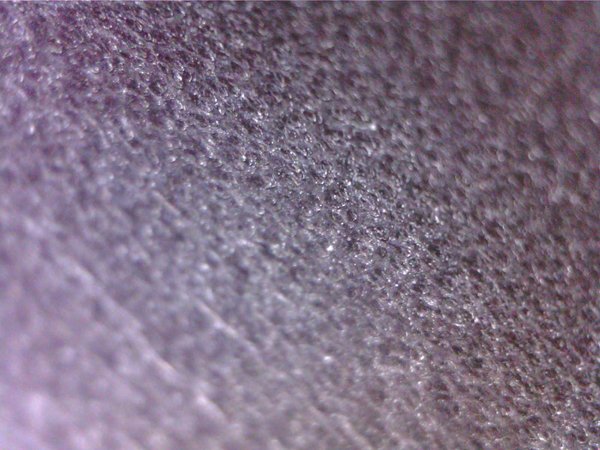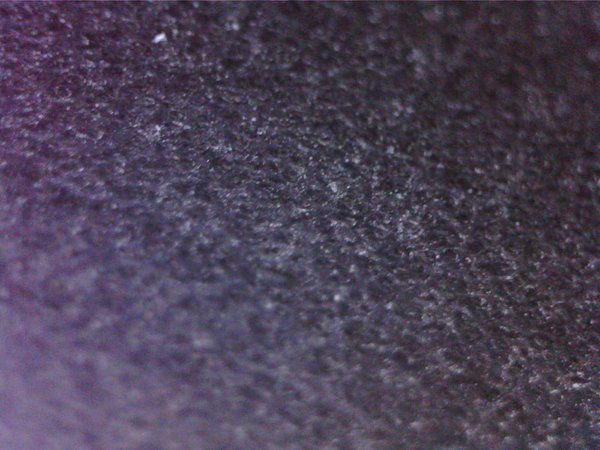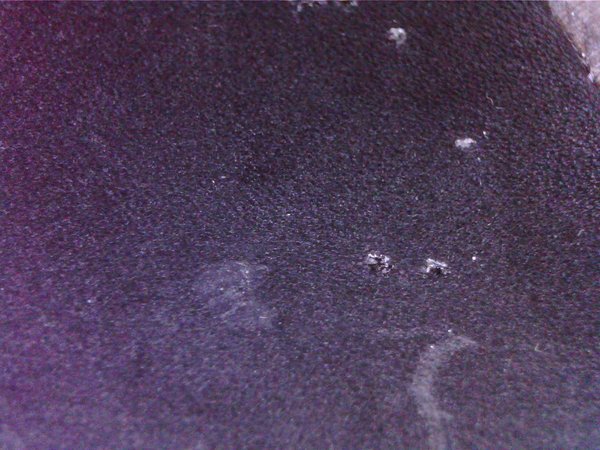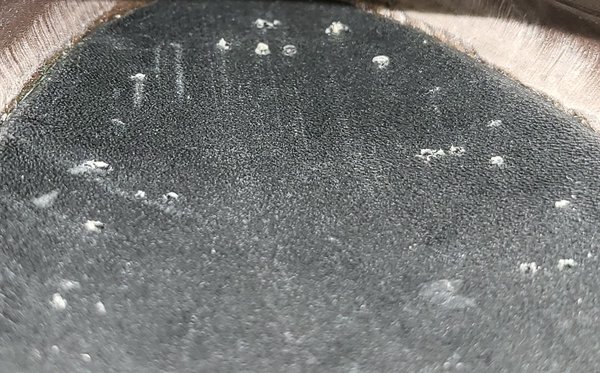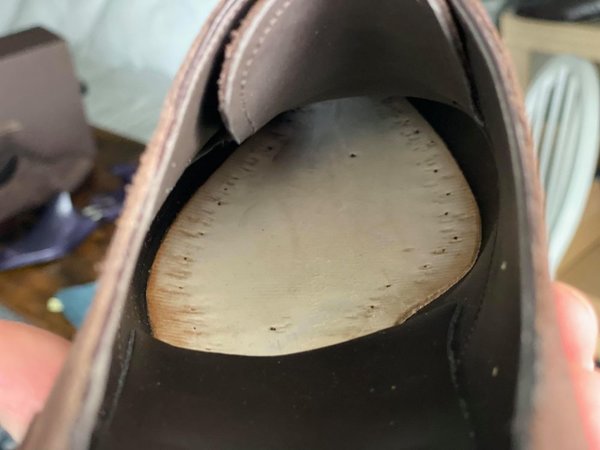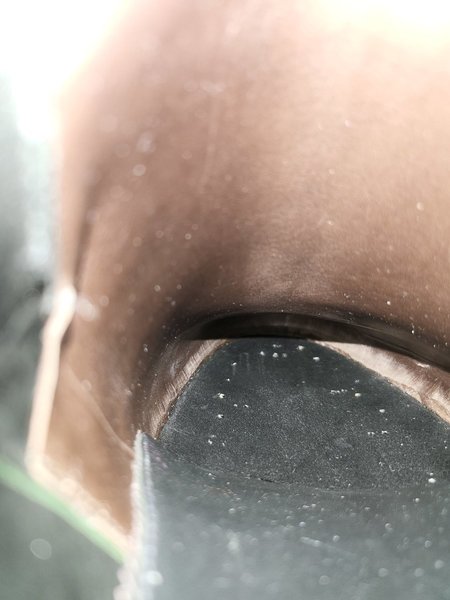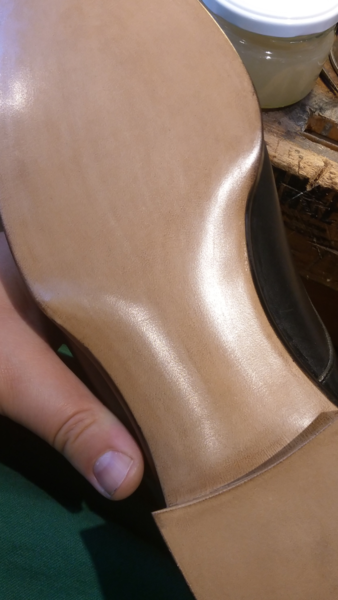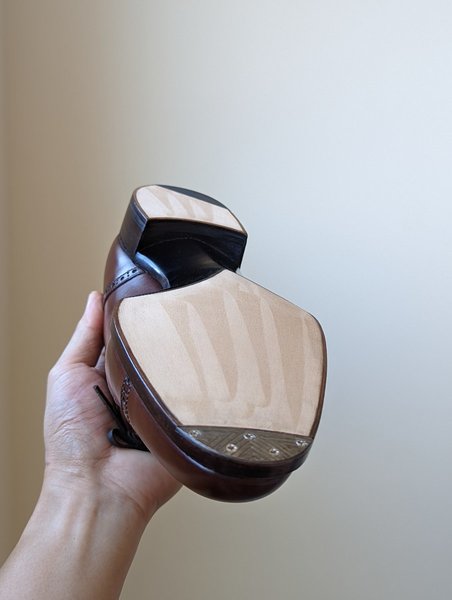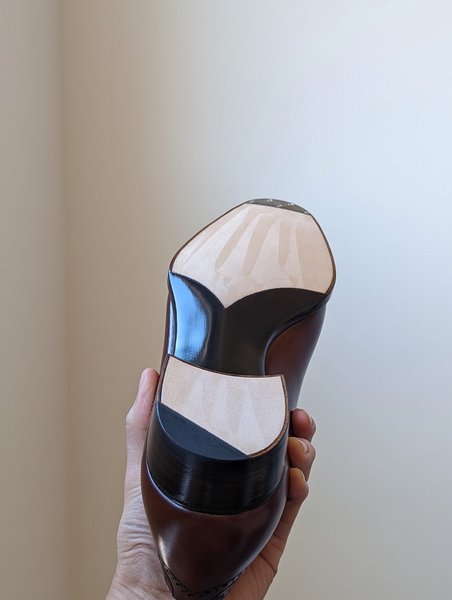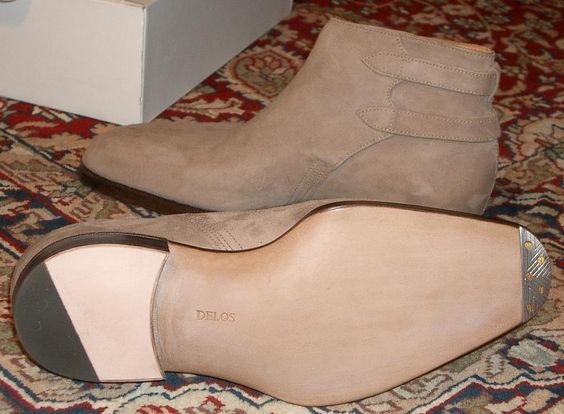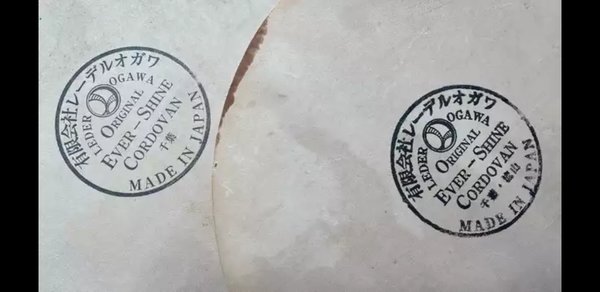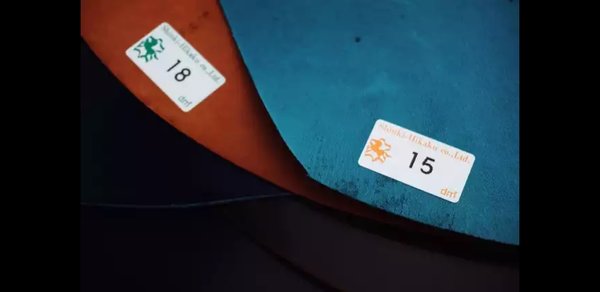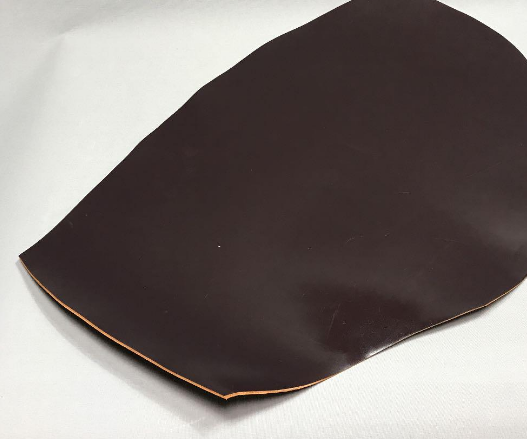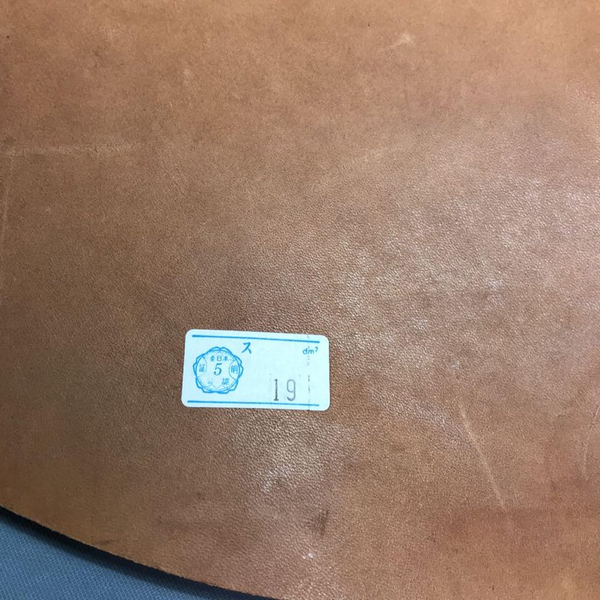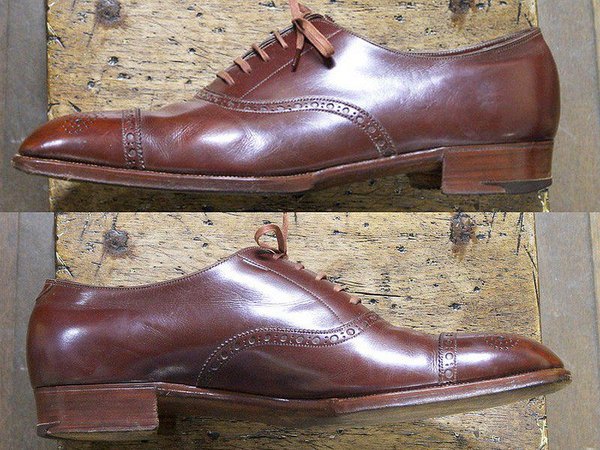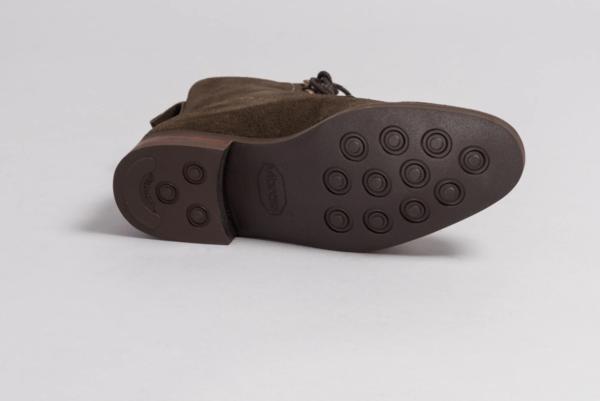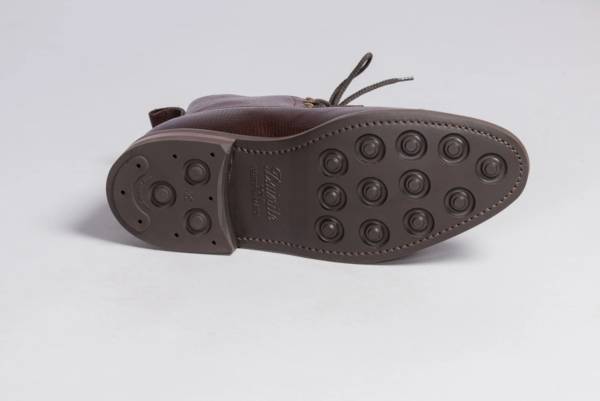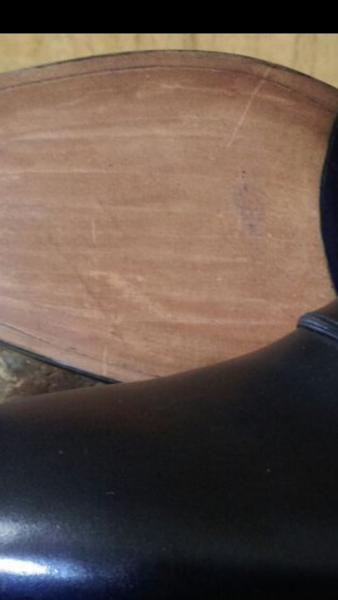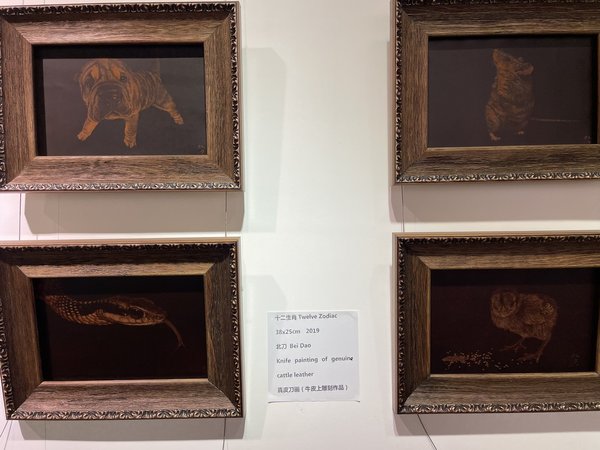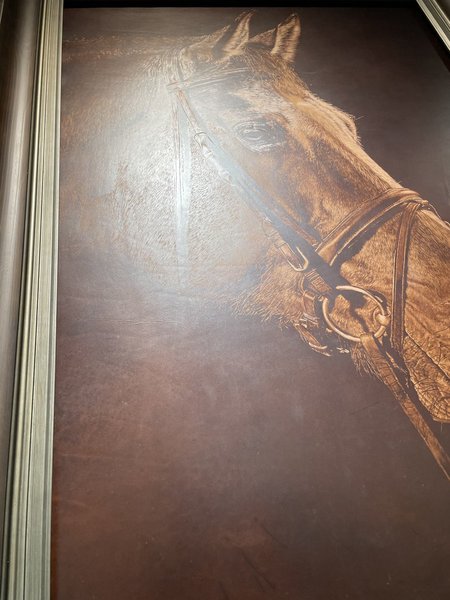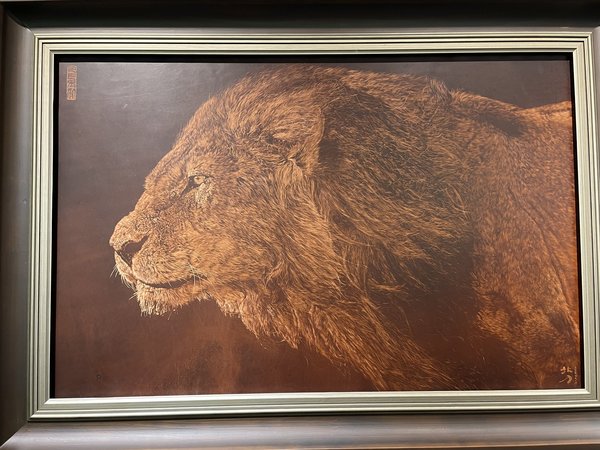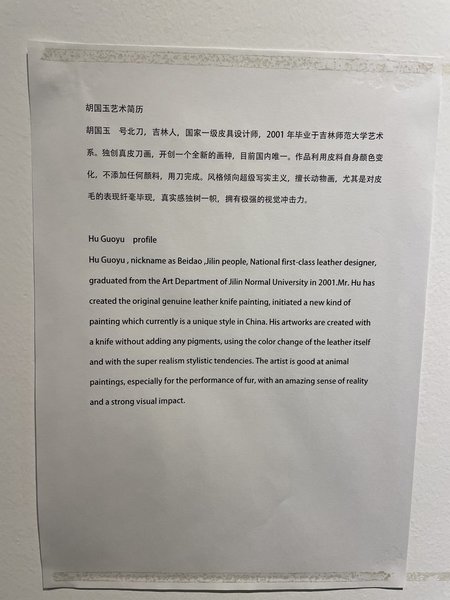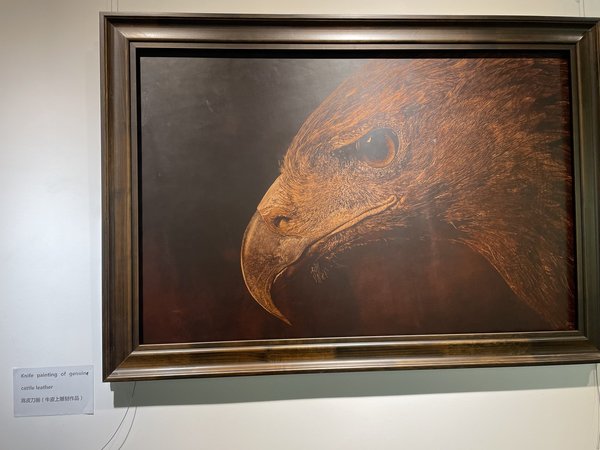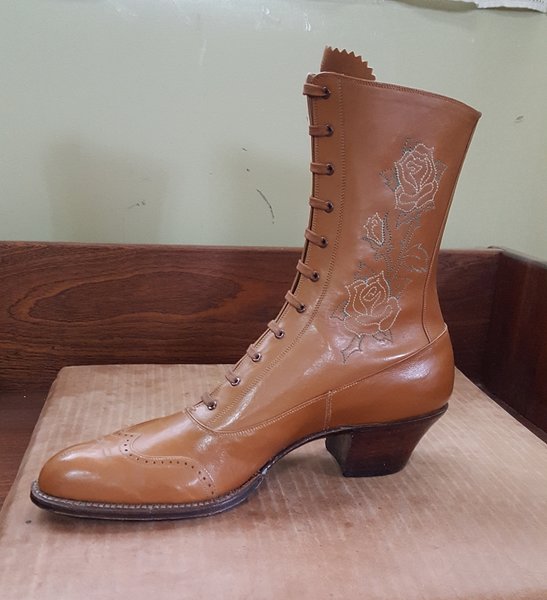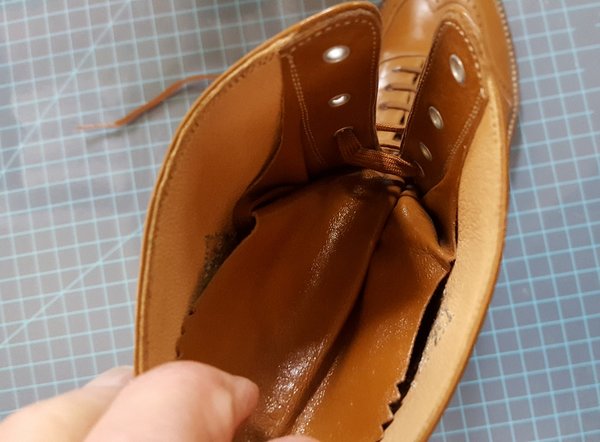- Joined
- Mar 23, 2002
- Messages
- 4,624
- Reaction score
- 1,282
I had a quick nose-around on your shoemaker's web-page and here are your boots (or a very similar pair)

It appears he has done the stay-stitches by machine, nothing wrong with that, many bespoke makers do it like that (and virtually all factories). English bespoke makers (and St Crispin) will place the stay-stitches by hand - 3 or 4 stitches using a much heavier cobbler's thread. I don't think the damage can get any bigger, as the entire row of stitches is broken, but the other three (if they haven't broken yet) might follow suit.
Here is a picture of a St Crispin boot with a hand-stitched stay:.

Is it only one of the stay-stitches that has broken, or all four? A skilled hand-stitcher should be able to repair it (after all. there is enough space to turn the needle). S/he might be able to use a fine thread, utilizing the existing needle holes, or using a heavy waxed thread, re-stitch all four and cover the existing needle holes.

He also says that there is no way that this can be repaired, and there is even nothing he can do to avoid the rip getting bigger over time. Is he right there?
I had a quick nose-around on your shoemaker's web-page and here are your boots (or a very similar pair)
It appears he has done the stay-stitches by machine, nothing wrong with that, many bespoke makers do it like that (and virtually all factories). English bespoke makers (and St Crispin) will place the stay-stitches by hand - 3 or 4 stitches using a much heavier cobbler's thread. I don't think the damage can get any bigger, as the entire row of stitches is broken, but the other three (if they haven't broken yet) might follow suit.
Here is a picture of a St Crispin boot with a hand-stitched stay:.
Is it only one of the stay-stitches that has broken, or all four? A skilled hand-stitcher should be able to repair it (after all. there is enough space to turn the needle). S/he might be able to use a fine thread, utilizing the existing needle holes, or using a heavy waxed thread, re-stitch all four and cover the existing needle holes.




